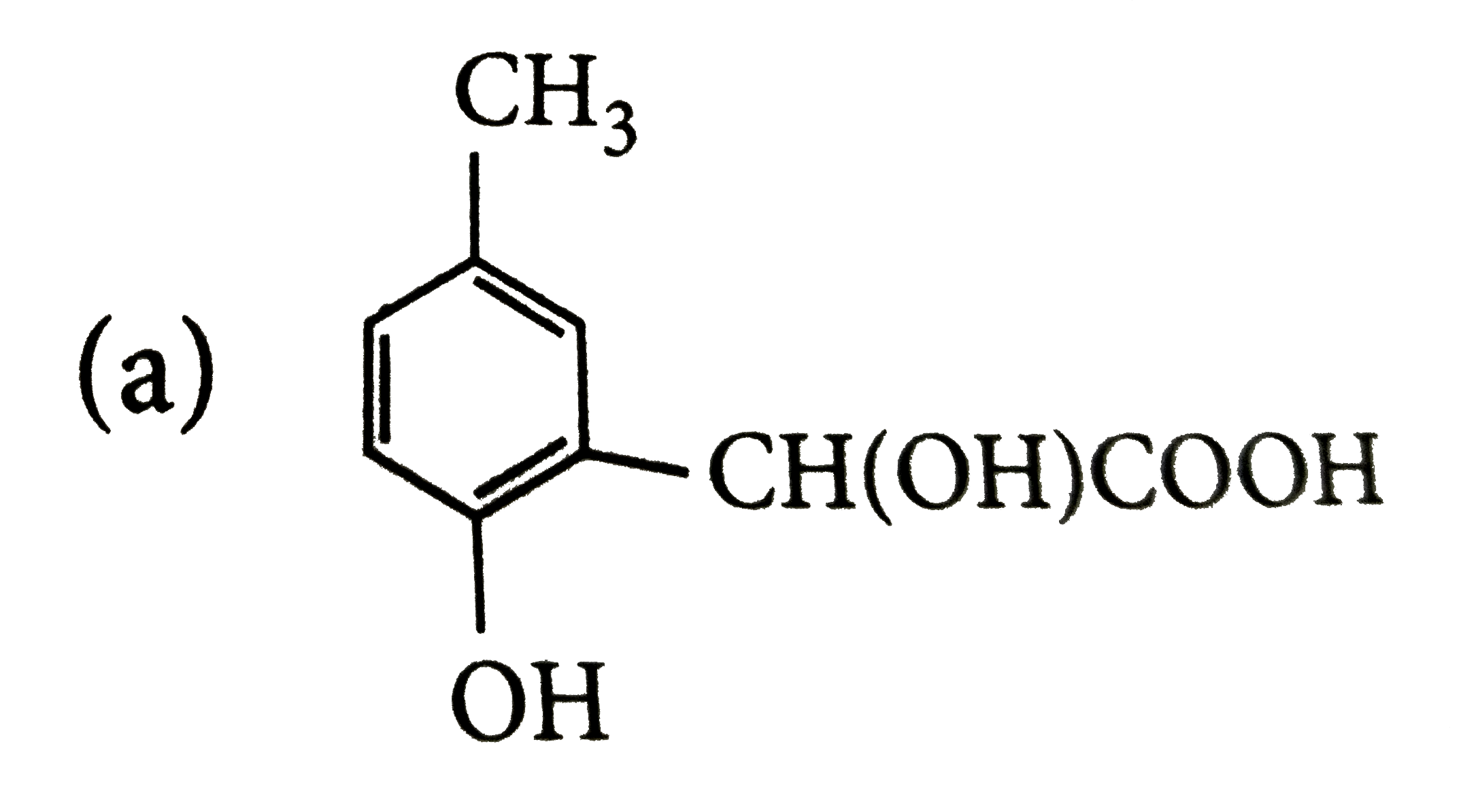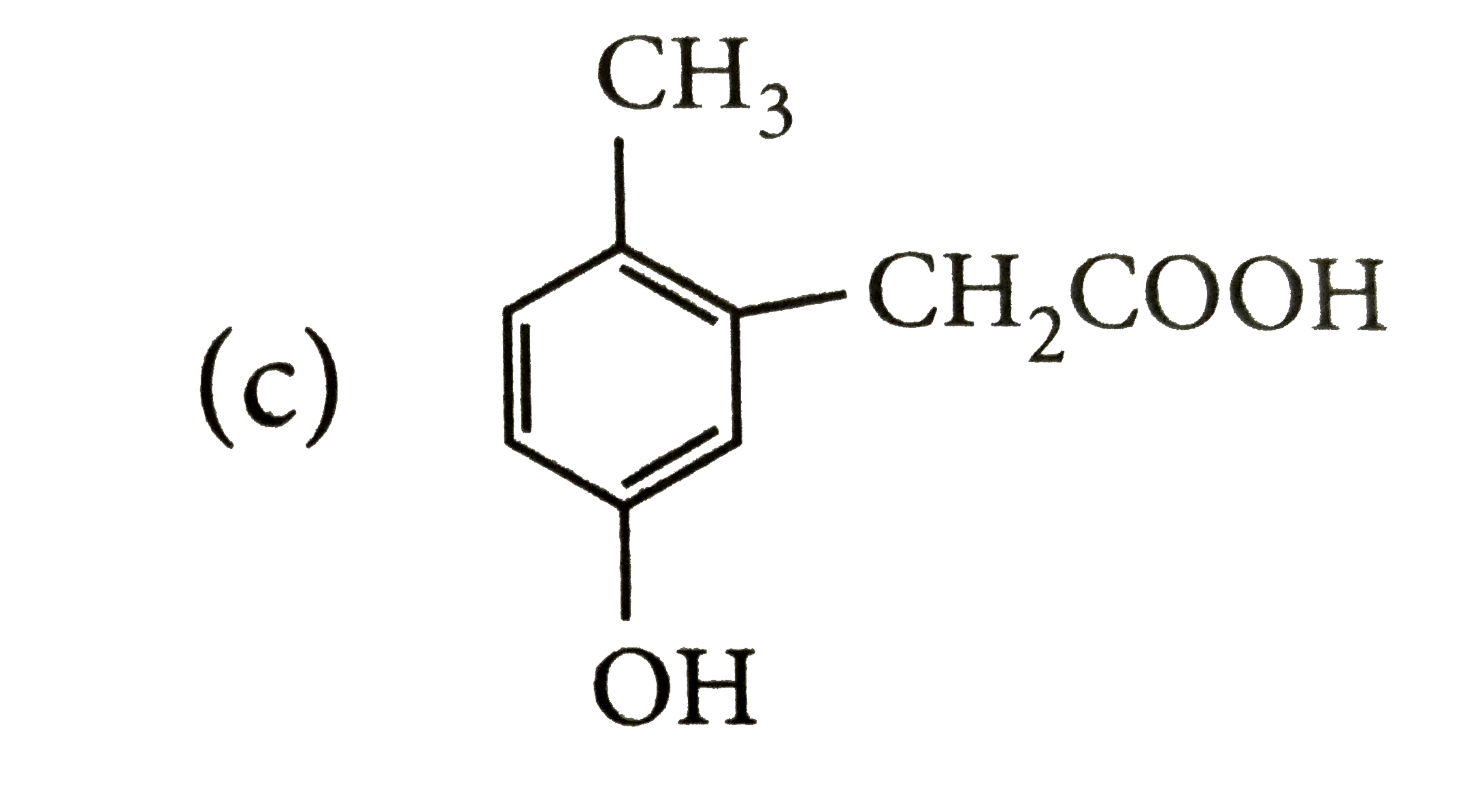Three isometic compounds M,N and P (C5H10O) give the following tests
(i) M and P react with sodium bisulfite to form an adduct J
(ii) N Comsumes I mol of bromine and also gives turbidity with conc. HCl/anhydrous ZnCl2 after prolong heating
(iii) M reacts with excess of iodine in alkaline solution to give yellow crystalline compound with a characterstics smell.
(iv) p-Rosaniline treated with sulphur dioxide develops pink colour on shaking with P the structure of M,N and P, respectively are




The correct Answer is:D
To solve the problem, we need to analyze the information given about the three isomeric compounds M, N, and P (C5H10O) based on the tests they undergo.
1. Identifying Compound M:
- Test: M and P react with sodium bisulfite to form an adduct J.
- Conclusion: This indicates that both M and P contain a carbonyl group (aldehyde or ketone).
2. Identifying Compound N:
- Test: N consumes 1 mol of bromine and gives turbidity with concentrated HCl/anhydrous ZnCl2 after prolonged heating.
- Conclusion: The consumption of bromine suggests that N has a double bond (alkene) or an alcohol group. The turbidity with ZnCl2 indicates that N is likely an alcohol, specifically a secondary or tertiary alcohol, which can react with ZnCl2 to form an alkyl halide.
3. Identifying Compound M (continued):
- Test: M reacts with excess iodine in alkaline solution to give a yellow crystalline compound with a characteristic smell.
- Conclusion: This indicates that M is a methyl ketone, which can undergo the iodoform reaction to form a yellow precipitate (iodoform).
4. Identifying Compound P:
- Test: P-rosaniline treated with sulfur dioxide develops a pink color on shaking with P.
- Conclusion: This reaction is characteristic of aldehydes, indicating that P is likely an aldehyde.
Structures of Compounds M, N, and P:
- Compound M: Methyl ketone, likely 3-pentanone (CH3COCH2CH2CH3).
- Compound N: A secondary or tertiary alcohol, likely 2-pentanol (CH3CH(OH)CH2CH2CH3).
- Compound P: An aldehyde, likely pentanal (CH3(CH2)3CHO).
Final Structures:
- M (3-pentanone): CH3COCH2CH2CH3
- N (2-pentanol): CH3CH(OH)CH2CH2CH3
- P (pentanal): CH3(CH2)3CHO
Summary:
- The structures of M, N, and P are:
- M: 3-Pentanone
- N: 2-Pentanol
- P: Pentanal
- Test: M and P react with sodium bisulfite to form an adduct J.
- Conclusion: This indicates that both M and P contain a carbonyl group (aldehyde or ketone).
- Test: N consumes 1 mol of bromine and gives turbidity with concentrated HCl/anhydrous ZnCl2 after prolonged heating.
- Conclusion: The consumption of bromine suggests that N has a double bond (alkene) or an alcohol group. The turbidity with ZnCl2 indicates that N is likely an alcohol, specifically a secondary or tertiary alcohol, which can react with ZnCl2 to form an alkyl halide.
- Test: M reacts with excess iodine in alkaline solution to give a yellow crystalline compound with a characteristic smell.
- Conclusion: This indicates that M is a methyl ketone, which can undergo the iodoform reaction to form a yellow precipitate (iodoform).
- Test: P-rosaniline treated with sulfur dioxide develops a pink color on shaking with P.
- Conclusion: This reaction is characteristic of aldehydes, indicating that P is likely an aldehyde.
- Compound M: Methyl ketone, likely 3-pentanone (CH3COCH2CH2CH3).
- Compound N: A secondary or tertiary alcohol, likely 2-pentanol (CH3CH(OH)CH2CH2CH3).
- Compound P: An aldehyde, likely pentanal (CH3(CH2)3CHO).
- M (3-pentanone): CH3COCH2CH2CH3
- N (2-pentanol): CH3CH(OH)CH2CH2CH3
- P (pentanal): CH3(CH2)3CHO
- The structures of M, N, and P are:
- M: 3-Pentanone
- N: 2-Pentanol
- P: Pentanal
Topper's Solved these Questions
- CARBONYL COMPOUNDS (ALDEHYDES & KETONES ) & CARBOXYLIC ACID BOOK - RESONANCE ENGLISHCHAPTER - CARBONYL COMPOUNDS (ALDEHYDES & KETONES ) & CARBOXYLIC ACID EXERCISE - Part -III
31 Videos
- CARBONYL COMPOUNDS (ALDEHYDES & KETONES ) & CARBOXYLIC ACID BOOK - RESONANCE ENGLISHCHAPTER - CARBONYL COMPOUNDS (ALDEHYDES & KETONES ) & CARBOXYLIC ACID EXERCISE - Part -IV
23 Videos
- CARBONYL COMPOUNDS (ALDEHYDES & KETONES ) & CARBOXYLIC ACID BOOK - RESONANCE ENGLISHCHAPTER - CARBONYL COMPOUNDS (ALDEHYDES & KETONES ) & CARBOXYLIC ACID EXERCISE - APSP
1 Videos
- BIOMOLECULES & POLYMERBOOK - RESONANCE ENGLISHCHAPTER - BIOMOLECULES & POLYMEREXERCISE - ORGANIC CHEMISTRY(Biomolecules & Polymer)
34 Videos
- CHEMICAL KINETICSBOOK - RESONANCE ENGLISHCHAPTER - CHEMICAL KINETICSEXERCISE - PHYSICAL CHEMITRY (CHEMICAL KNIETICS & RADIOACTIVITY)
49 Videos
Similar Questions
Knowledge Check
Compound [X]C4H11N reacts with p− toluene sulphonyl chloride in aqueous NaOH to give a solid. The compound [X] is :
ACH3−CH2−CH2−CH2−NH2BH3C−C∣CH3H−CH2−NH2CCH3CH2−NH−CH2−CH3DH3C−CH2−N∣CH3−CH3p-cresol reacts with chloroform in alkaline medium to give the compound A which adds hydrogen cyanide to form, the compound B. the latter on acidic hydrolysis gives chiral caboxylic acid. The structure of the carboxylic acid is
A B
B C
C D
D
An aromatic compound A of the molecular formula C8H10O on reaction with iodine and dilute NaOH gives a yellow precipitate. The structure of the compound is expected to be :
A BC6H5CHOHCH3C
BC6H5CHOHCH3C D
D
A compound (C5H8) reacts with ammoniacal AgNO3 to give a white precipitate and reacts with excess of KMnO4 solution to give (CH3)2CH−COOH. The compound is
View SolutionA compound P(C5H6) gives positive Bayer test and on hydrogentation from a hydrocarbon B(C5H10) which gives only monochloro product. The compound 'P' is.
View SolutionA colourless liquid A(b.p.184∘C) is sparingly soluble in warm water to which it gives feebly alkaline. On treating with NaNO2 and dil HCl in the cold solution, it yields a solution which reacts with an alkaline solution of β-naphthol to give an orange yellow precipitate. Compound A is -
View SolutionAn optically active compound [A] C5H13N reacts with alkaline CHCl3 to give an optically active, compound [B]. [A] also reacts with nitrous acid to give an optically inactive alcohol [C] C5H11OH as the major product. What would be the structure of [A]?
View SolutionA compound (A) C5H10Cl2 on hydrolysis gives C5H10O which reacts with NH2OH, forms iodoform but does not give Fehling test (A) is :
View Solution
